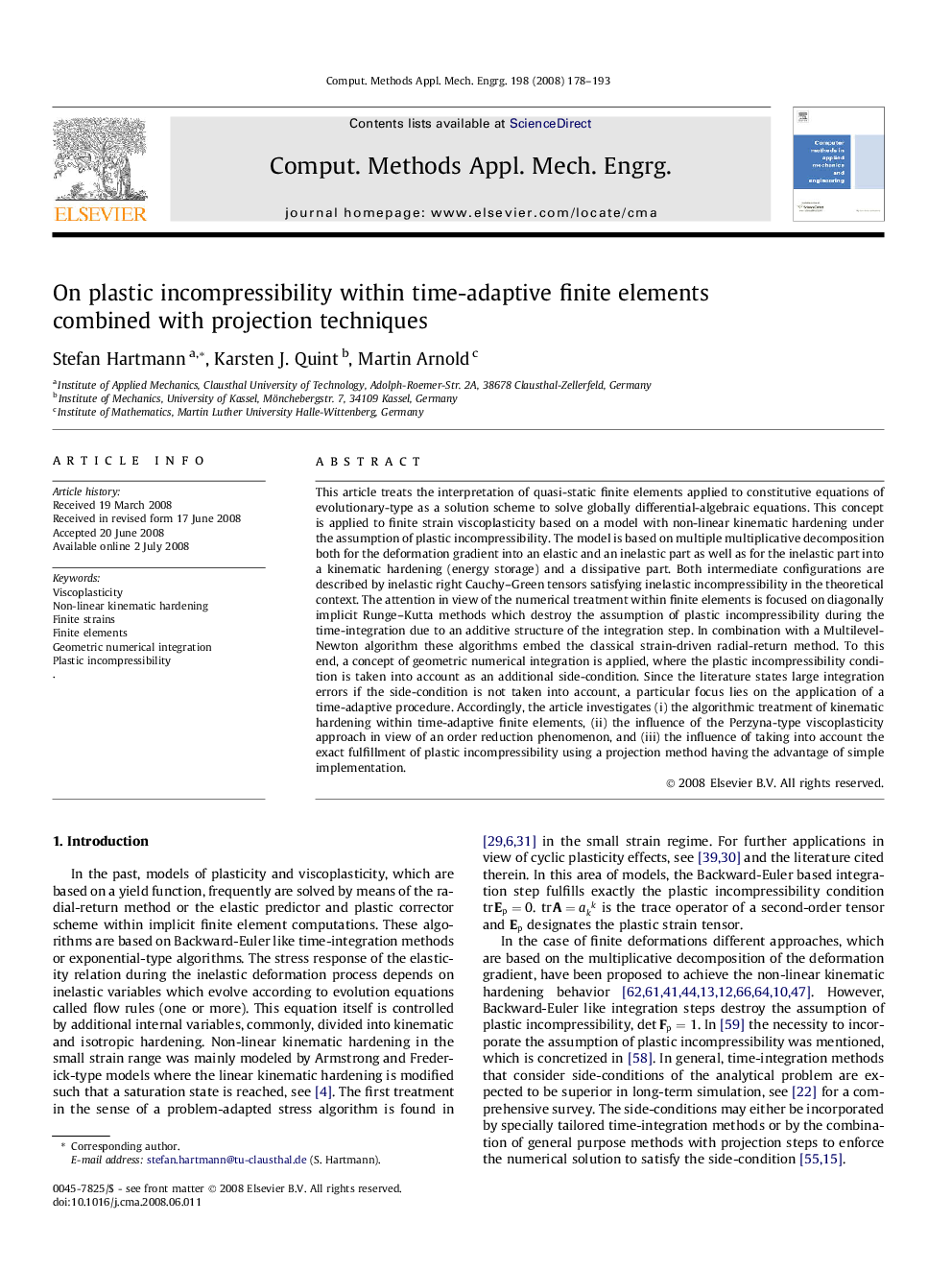| Article ID | Journal | Published Year | Pages | File Type |
|---|---|---|---|---|
| 499197 | Computer Methods in Applied Mechanics and Engineering | 2008 | 16 Pages |
This article treats the interpretation of quasi-static finite elements applied to constitutive equations of evolutionary-type as a solution scheme to solve globally differential-algebraic equations. This concept is applied to finite strain viscoplasticity based on a model with non-linear kinematic hardening under the assumption of plastic incompressibility. The model is based on multiple multiplicative decomposition both for the deformation gradient into an elastic and an inelastic part as well as for the inelastic part into a kinematic hardening (energy storage) and a dissipative part. Both intermediate configurations are described by inelastic right Cauchy–Green tensors satisfying inelastic incompressibility in the theoretical context. The attention in view of the numerical treatment within finite elements is focused on diagonally implicit Runge–Kutta methods which destroy the assumption of plastic incompressibility during the time-integration due to an additive structure of the integration step. In combination with a Multilevel-Newton algorithm these algorithms embed the classical strain-driven radial-return method. To this end, a concept of geometric numerical integration is applied, where the plastic incompressibility condition is taken into account as an additional side-condition. Since the literature states large integration errors if the side-condition is not taken into account, a particular focus lies on the application of a time-adaptive procedure. Accordingly, the article investigates (i) the algorithmic treatment of kinematic hardening within time-adaptive finite elements, (ii) the influence of the Perzyna-type viscoplasticity approach in view of an order reduction phenomenon, and (iii) the influence of taking into account the exact fulfillment of plastic incompressibility using a projection method having the advantage of simple implementation.
